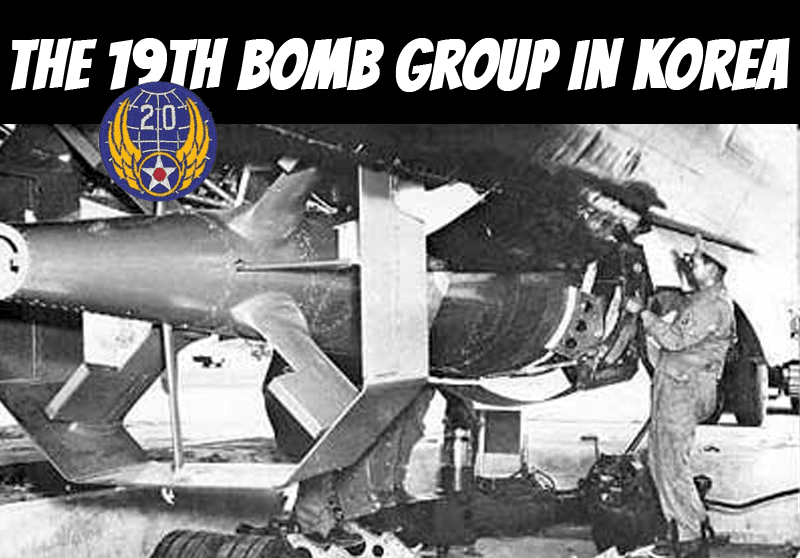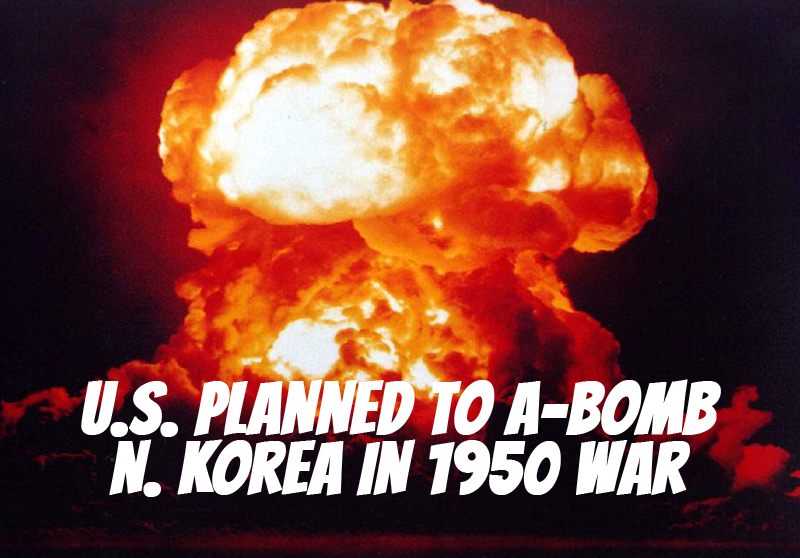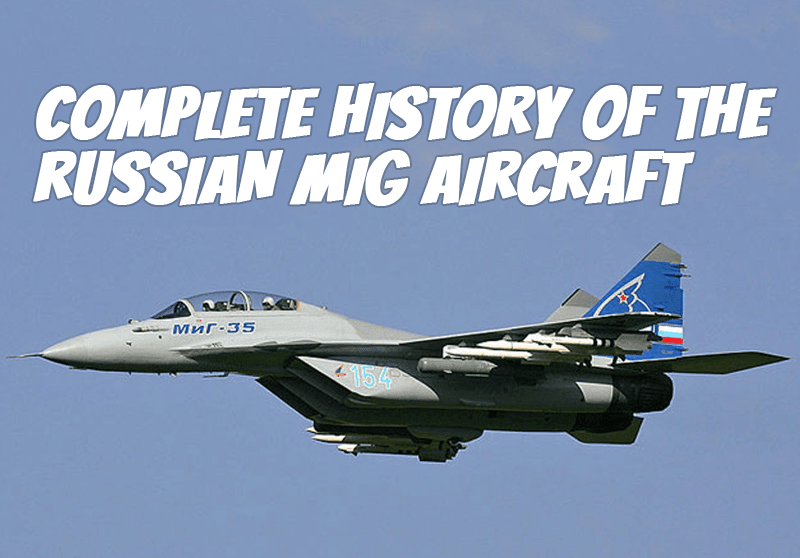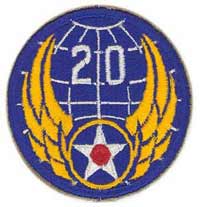 The 19th Bomb Group is one of the oldest military organizations, having served with distinction in two World Wars plus Korea. It is one of the most decorated units in the Strategic Air Command. Their motto has always been “A CHECKMATE TO AGGRESSION”. WE will endeavor to cover their performance in the Korean War.
The 19th Bomb Group is one of the oldest military organizations, having served with distinction in two World Wars plus Korea. It is one of the most decorated units in the Strategic Air Command. Their motto has always been “A CHECKMATE TO AGGRESSION”. WE will endeavor to cover their performance in the Korean War.
Operation Korea
After serving in WW11, the 19th was assigned to Guam in 1945. At that time I was an Aerial Photo Gunner on the RB-29 “Tiger Lil” stationed at Kadena Air Force Base on Okinawa. It was June 26, 1950, and it had just been announced that North Korea had invaded the South. My crew was sitting in the shade under the wing of “Tiger Lil” when a steady stream of B-29’s were lined up on final, and pretty soon the airfield was a beehive of activity with trucks delivering 500 pound bombs. I walked over to the plane just parking next to ours, and asked one of the crewmen where they were from. The reply was “we’re the 19th from Guam”. I asked what they were doing on Okinawa and they said after gassing and loading with bombs they were scheduled for immediate departure for North Korea. Some crews were short as some crewmembers were on leave, and they were asking for volunteers. Within hours I was on my way to Korea with the 19th, my memory is a little vague here but I believe the plane was “ATOMIC TOM”. I flew several missions with them and was so impressed with the professionalism of all the crews. My records show Atomic Tom as being the first B-29 to drop bombs on the North. My own group, the 91st Strategic Reconnaissance Squadron, a SAC unit of the 15th Air Force, was immediately committed to action.
The War Begins
General Vandenberg moved the 22nd and 92nd Bomb Groups of the 15th AF to join the 91st SRS and the 19th Bomb Group, forming the Far East Air Forces Bomber Command at Yokota, Japan, under the command of Maj. Gen. Emmett O’Donnell, Jr.
The Mig Air War
The first Mig 15 appeared in North Korea on Nov. 1, 1950. By December Migs over the Sinuiju and Sinanju area were inflicting heavy damage on our bombers.
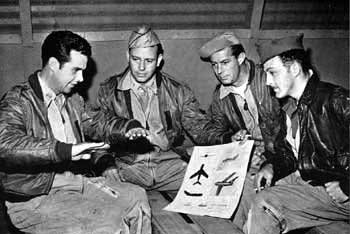
[above] S/sgt Norman Green, B-29 gunner from the 19th Bomb Group demonstrates how he shot down one Mig, and was credited with another “probable”
Now known as “Mig Alley”, a typical engagement occurred on Apr. 12, 1951.
B-29’s of the 19th, 98th, and 307th were attacked by 50 Migs which shot down one from the 19th and seriously damaged five others. Other raids by B-29’s in the Mig Alley area were overwhelmed by scores of Migs and suffered heavy losses. Finally Gen. Stratemeyer ordered all B-29 raids in the Sinuiju area called off. Besides the Mig menace there was very accurate anti-aircraft fire over Pyongyang which became an increasing problem as it became more deadly.
Razon and Tarzon
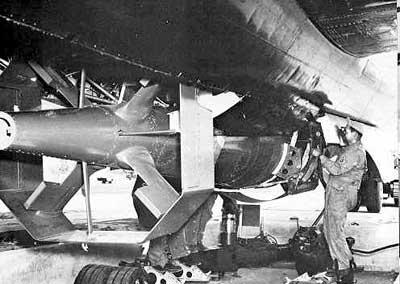
Loading the huge Tarzon Bomb in a modified B-29 of the 19th Bomb Group. USAF
With the Mig problem increasing, FEAF Bomber Command changed their tactics. They increased the bombing altitude, which of course decreased the accuracy. The 19th was testing the 1000 pound Razon Bomb which could be steered in flight by radio controlled tail fins. The Razon responded to impulses sent by the bombardier. Success was slow to come, supplies were limited, and the bomb was not large enough. To solve this problem the 12,000 Tarzon bomb was tested. Although showing great promise, results were disappointing. In one month eight B-29’s were lost and 25 badly damaged. Gen. Stratemeyer once again ordered further reduction in B-29 operations. Finally the Tarzon era ended.
June of 1951 was a black month for Bomber Command as B-29 groups were attacked by 100’s of Migs operating from the Antung airfield just across the Yalu. On Oct. 1, 1951, the 91st SRS was ordered to suspend operations in the North Western area. Furthermore the 19th was forced to bomb at night using Shoran Radar techniques. The communist responded by using Radar directed searchlights combined with anti-aircraft fire. Four B-29’s of the 19th were illuminated by 24 searchlights and attacked by 12 Migs which shot down two and seriously damaged a third which crashed. That episode plus the continuing aggressiveness of the communist ended the “nighttime protection” for the 29’s.
19th Final Analysis
The 19th Bomb Group flew 645 combat missions, dropping over 52,000 tons of bombs during the conflict. They reported 91 airmen lost and 20 aircraft, a very heavy price to pay. They received nine Presidential Unit Citations, and the Republic of Korea Pres. Unit Citation. After spending nine years overseas they were returned to the U.S. and assigned to the Strategic Air Command. The B-29 was phased out and replaced by the B-47 Stratojet, and finally the B-52. They can be very proud of their service, professionalism, and performance. As always, they will be “A CHECKMATE TO AGGRESSION”
Afterthought
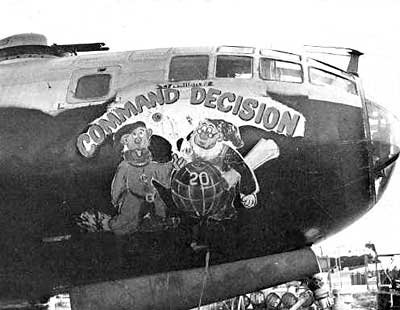
Command Decision was the best known B-29 of the Korean War. Her gunners shot down five jet fighters, three in one confrontation. She flew a total of 121 missions. USAF
The Korean conflict had a dramatic effect on the conventional bomber. SAC phased out the B-29 in favor of the B-47. We learned a very difficult lesson, that the manned bomber was soon to become a relic to be read about in Military History Books.
Note: Our website is proud to add the following beautiful photos of COMMAND DECISION graciously sent by BRIAN HANABLE. Brian’s father was the CFC gunner on that famous plane.
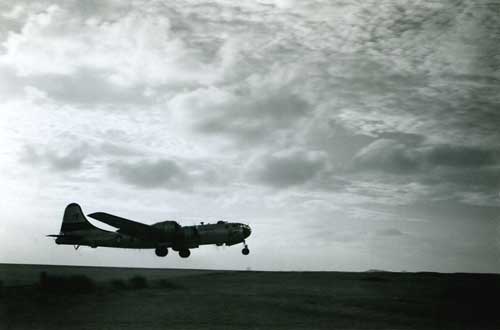
Pictured above: Command Decision taking off
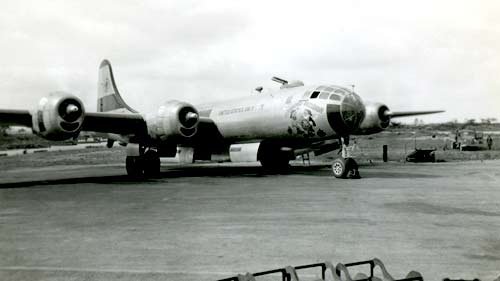
Pictured above: Command Decision Warming up
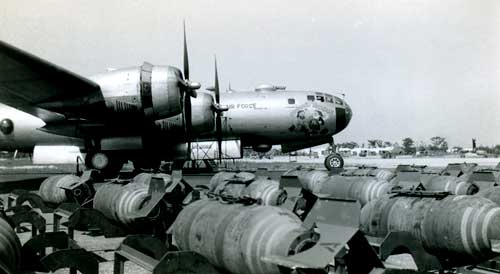
Pictured above: Command Decision Ready to load
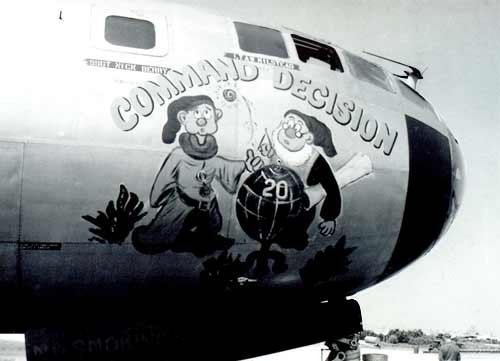
Pictured above: Command Decision Famous nose art
Note: Personal comments concerning performance of the 19th, and aspects of the Korean War are strictly those of Wayland Mayo, who was there.
- The Battle of Midway: Turning the Tide in the Pacific - June 7, 2023
- The D-Day Operation of June 6, 1944 - June 6, 2023
- The B-29 that Changed History - June 4, 2023

